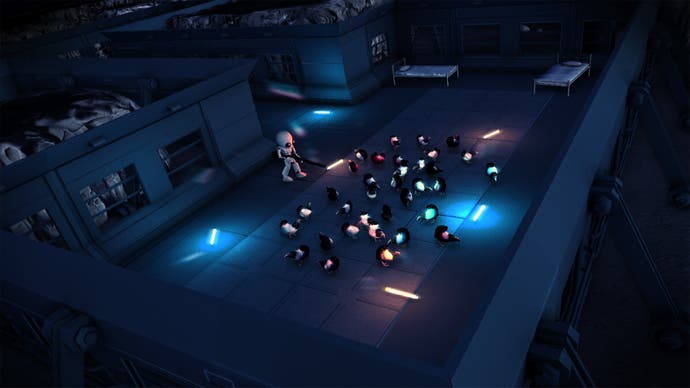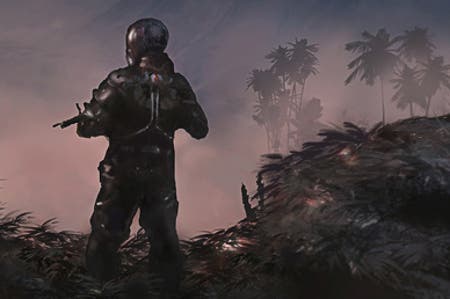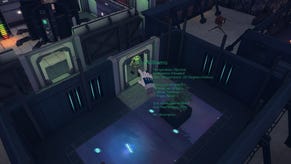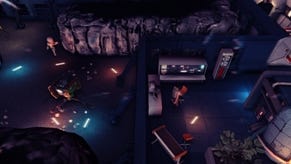Maia Preview: Mostly Harmful
Space program.
Simon Roth has been building worlds for quite some time now. It seems he has a talent for crafting game engines, for coding procedural generation routines and for modelling complex systems. As he shows me a very early build of Maia, he relates an interesting story about a certain game that never was, a project of his from a few years back.
"I came up with the idea of a voxel engine game, kind of like Dwarf Fortress but first person, where you can dig and you can build things," he says. I'm intrigued. "And then you'd have to defend your base from monsters. But everyone said 'Nobody will ever buy this game! No-one's interested in building stuff!'"
Undaunted, Roth has kept himself busy building many more worlds and modelling the systems within them, and right now he's telling me about how he wants to model liquids as accurately as possible. Not just any liquid, mind, but lava, so that when it burns its way through the underground, off-world colony that you've so carefully nurtured, you'll be able to appreciate just how realistically it's melting all your stuff.

He describes Maia as "A God game in the mould of Bullfrog or Maxis," but set in a kooky, all-too-imperfect future, and primarily a sandbox game, something for players to fool around in. To this end, he's devoting much of his time to shaping the game's fundamentals, its AI routines, physics and world generation, so that everything in the game responds believably.
"The final game is going to be a lot of these complex systems," he explains, "Much like Dwarf Fortress is, but with an interface. I love the idea of Dwarf Fortress, and it's one of the things that inspired this game, because you can just play with it."
As well as crafting, construction and all sorts of critters, Roth wants to expand the scope of the game and model among many other things, including atmosphere, light and darkness. "Lights are an important part of the game, because not only do they affect your colonists' mood, but if you have a lot of lights, it's going to attract animals. Hostile animals."
Atmospheric considerations include things like a rise in compartment pressure caused by a build-up of steam, or a damaged airlock explosively decompressing and violently ejecting its contents, something that Roth gets a bit too excited about.

Actually, he revels in his descriptions of things going wrong and is desperate to throw a bit of chaos into the mix. He's been adding noise to his AI routines, he tells me, to make things a little less predictable, to keep players on their toes and constantly give them new problems they have to deal with. "I want randomness to be a big part of the game," he says "And some of it to be quite cruel randomness."
Roth works for Mode 7 Games, of Frozen Synapse fame, but Maia is a side project of his based on ideas he's been entertaining for some time. As we talk over different aspects of the game, including the many different things he wants to incorporate, it becomes apparent to me this isn't some idle venture, but in fact an ambitious and very carefully considered project.
The game engine, already slick and shiny, is capable of enormous things. It can handle 128,000 different lights in a frame, I'm told, and because Roth was always frustrated with the limited playing areas in games like Sim City, Maia's engine will procedurally generate a 2 kilometre cubed playing area. Roth takes me on a quick tour of one, trying to scroll to the edge. "It'll probably run out in a second," he says. It doesn't.
Maia is still in an early alpha stage, but it already looks like a fascinating game with a great deal of potential. It's official website can be found here.







